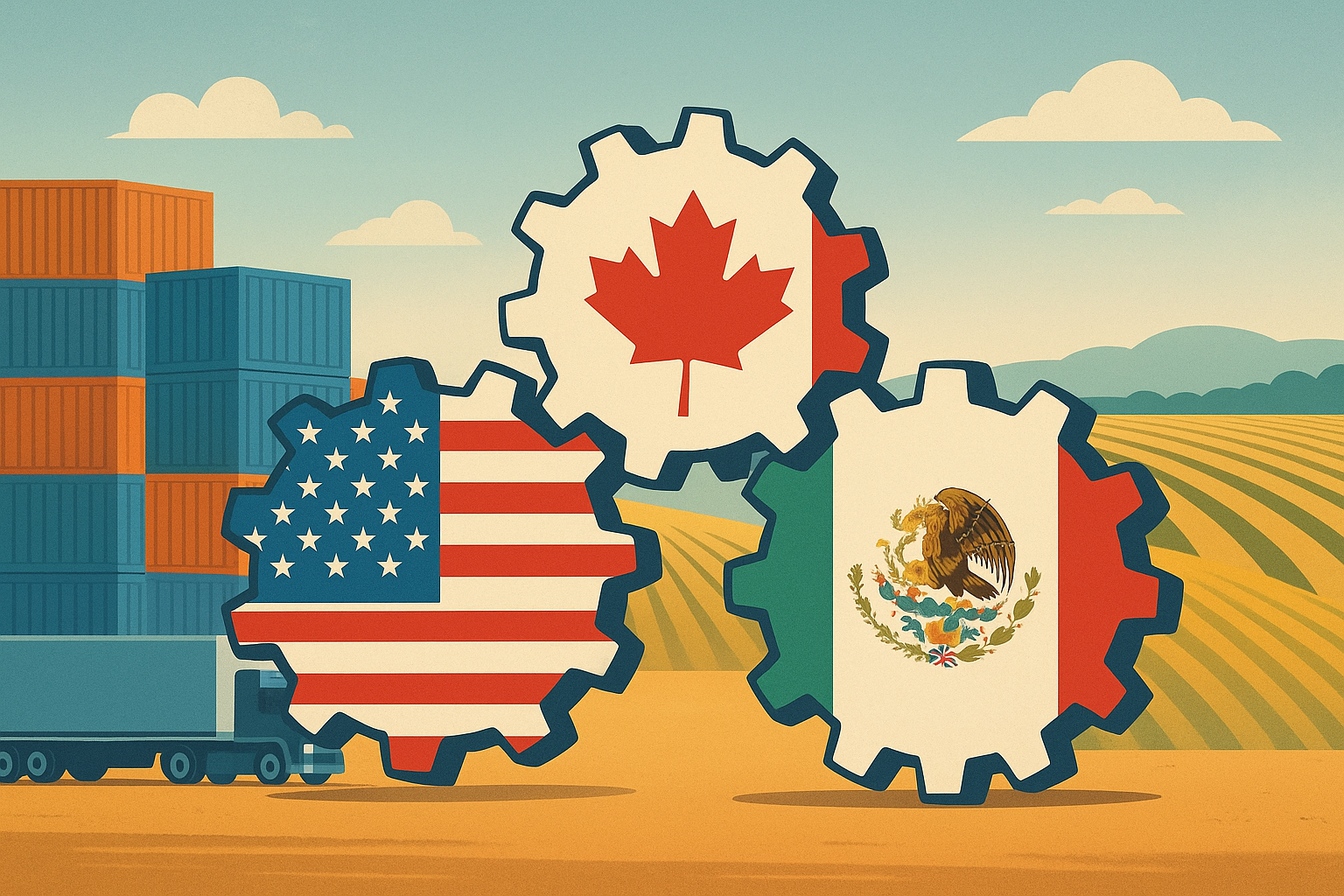North America’s trade pact is back under the microscope, and investors are paying close attention. The United States has formally launched its review of the U.S.-Mexico-Canada Agreement (USMCA), a process that will extend through 2026. Public consultations are already underway, while Canada and Mexico are preparing their own assessments—raising questions about how key sectors such as autos, manufacturing, and agriculture could be reshaped if revisions emerge.
Why This Matters for Investors
Trade agreements are often the quiet backbone of global markets. For investors, the USMCA review is more than a bureaucratic exercise—it sets the tone for tariffs, cross-border supply chains, and investment incentives across North America. The auto sector, which relies heavily on USMCA’s rules of origin, could face fresh scrutiny. Adjustments in these rules could significantly impact cost structures for companies like General Motors, Ford, and Stellantis, as well as suppliers spread across the region.
Equity investors are not the only ones watching. Commodity markets—particularly agriculture and energy—stand to see ripple effects if rules are renegotiated. U.S. dairy access into Canada, Mexican energy reforms, and agricultural export restrictions could reemerge as points of contention. For bond markets, trade uncertainty could contribute to risk premiums, particularly for corporates with high cross-border exposure.
Political Context and Market Sensitivity
The review comes at a time when U.S. trade policy is back in the spotlight. With 2026 marking the six-year review milestone built into the USMCA, the current process opens the door to a renegotiation—or even potential withdrawal—if one party deems the agreement unfavorable. According to the Financial Times, U.S. officials are seeking feedback on how effectively the deal has supported American workers and businesses, while Canada and Mexico are quietly lining up lobbying campaigns to safeguard their industries.
Markets have historically reacted to U.S. trade tensions with volatility. During the original NAFTA renegotiations under the Trump administration, equities tied to autos and agriculture saw sharp swings on tariff threats. Analysts at Bloomberg Intelligence warn that similar volatility could resurface if negotiations stall or if rhetoric escalates.
Future Trends to Watch
- Automotive Supply Chains – Any change to content rules or tariff structures will ripple through North American manufacturers. Investors should monitor auto equities closely.
- Agriculture & Commodities – U.S. dairy, Canadian grain, and Mexican produce exports are likely to be debated again, creating short-term opportunities in commodities trading.
- Energy Policy – Mexico’s nationalist energy stance has already created friction. If included in review talks, it could influence U.S. energy firms operating in Mexico.
- Political Timing – With U.S. elections looming in 2026, campaign rhetoric may overlap with negotiations, amplifying uncertainty for investors.
Key Investment Insight
Investors should prepare for sector-specific volatility as the USMCA review unfolds. Autos and agriculture appear most vulnerable to disruption, but broader supply chain equities—including logistics and industrials—could also see movement. Long-term investors may find opportunities in companies positioned to adapt efficiently to new trade rules, while short-term traders could benefit from monitoring tariff and negotiation headlines.
The USMCA review is a reminder that trade deals are not static. For investors, the next 18 months will be defined by uncertainty, political theater, and shifting risk-reward dynamics across multiple sectors. Staying ahead of policy signals and sector-specific developments will be critical.
Stay tuned with MoneyNews.Today for daily updates on how North America’s trade negotiations are shaping markets and investment opportunities.





